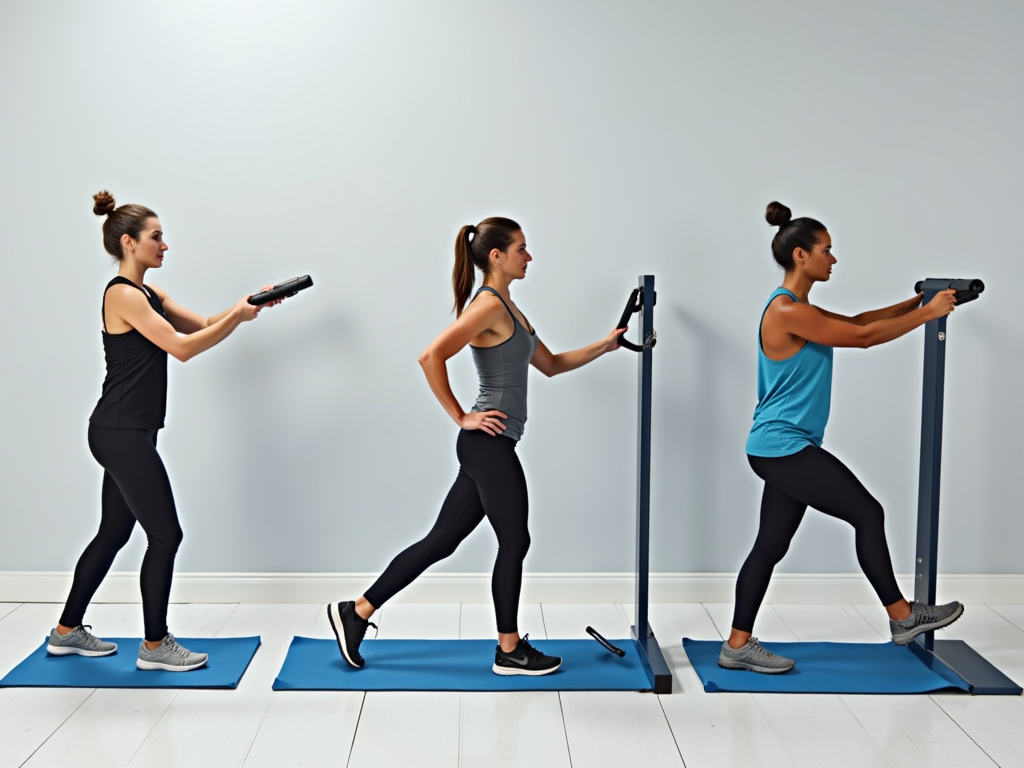When it comes to staying active and losing weight, incline walking can be one of the most effective exercises. Find out more about Walking on an Incline vs. Running.

Movement Intelligence: Transforming Daily Steps into Life Momentum
Steps to Miles Converter: Track Your Daily Movement Goals
You want a quick workout to burn fat and stay fit, but the gym isn’t your thing. Consider incline walking on a treadmill instead of running. Can it offer the same benefits with less impact? This article explores incline walking vs. running to help you decide, plus a bonus on outdoor options.
Key Takeaways
- Walking on an incline and running both offer great cardiovascular benefits, but they work different muscles.
- Incline walking focuses more on the glutes, hamstrings, and quads than running on a flat surface.
- Running is a high-intensity workout that burns more calories quickly.
- Both activities can aid in weight loss, but incline walking is less likely to cause injury because it’s low-impact.
- Choosing between incline walking and running depends on your fitness goals, health, and preferences.
Incline treadmill walking vs. running
Regarding burning calories, treadmill walking and running are similar, but you’ll burn more calories on an incline. Running on an incline is more effective than walking because it offers more resistance and engages more muscles. Both exercises increase your heart rate with little strain, making them great low-impact options compared to high-impact cardio like running or cycling.
Incline walking is a great alternative to running. It can burn fat, build muscle, and help you lose weight while significantly boosting endurance.
If you’re unsure about incline treadmill walking, try flat-surface walking, incline treadmill walking, and road running to see which you prefer. Choose the activity that aligns with your goals and preferences, and keep doing it regularly to continue reaping the benefits!
Walking Incline vs. Running: Muscles
Running and walking are both great exercises that burn calories, tone muscles, and build endurance. Before choosing which is best for you, consider their differences.
Both activities use your leg muscles, but running engages more muscles than walking. When running, all leg muscles work together, rapidly contracting and relaxing to move you forward. In walking, only some leg muscles are active at a time.
Running involves a rapid extension pattern of muscle contraction (called eccentric contraction), which helps protect your joints by reducing impact. While running or jogging can stress your joints, engaging more muscle mass can lower the risk of pain or injury.
Running on a treadmill at an incline is better than walking on a treadmill at an incline.
It gives you more support and prevents injuries like slipped disks or plantar fasciitis (calf pain).

Walking Incline vs. Running: Convenience
Running is a convenient exercise option, especially with a treadmill at home or in the gym.
Perhaps the most important thing is that you don’t need to go outside to walk on an incline. The world is full of people who don’t want to go jogging because they know they will get sweaty or their hair will get messed up by the wind. If this describes you, walking on an incline treadmill may be a good alternative for your workouts.
One of the biggest advantages of walking on an incline is that it is easier on your joints than running. If you’re a runner with knee pain, walking on an incline may help reduce the discomfort. Walking on an incline is a great way to get in shape if you’re prone to hip or ankle injuries from running, as it puts less strain on those areas.
Walking incline vs. running: Running burns more calories per minute than walking.
However, it’s also more difficult to sustain for long periods.
The calorie expenditure rate is a function of speed and weight. The faster you go, the more calories you burn per minute, but running also requires more energy than walking. Walking is likely the best option for long-term success if you’re starting your fitness journey and looking for something to help you lose weight.
If you have some experience with exercise and are looking for ways to challenge yourself without risking injury or burnout from hitting too hard too soon, running may be an excellent choice for your workout routine!
The calories burned are also related to your body mass, so a larger person will burn more calories doing either activity.
Additionally, calorie burn is related to how fast you are going (in terms of your speed), so if you walk faster or run faster, the rate at which your body uses energy (calories) will also increase.

How to walk or run for weight loss?
Walking is an excellent exercise for beginners aiming to lose weight. It’s gentle on your joints, can be done anywhere, and requires no equipment. To enhance your fitness routine, combine walking with resistance training to improve muscle tone and burn more calories. Target different muscle groups to reduce injury risk.
Walking vs. running up an incline
Running up an incline engages more muscle groups than walking, keeping your heart rate elevated longer. However, it also puts more stress on your ankles and knees, increasing injury risk. Ensure proper technique and allow recovery time to prevent injuries.
Factors determining the total calories burned
The amount of calories you burn depends on several factors, including:
Your weight and height
Speed: The faster you walk, the more calories you’ll burn. Aim for about 5 mph if you’re running. For incline walking, adjust your speed based on the treadmill incline and your fitness level. Go as fast as you can while maintaining good form and comfort.
Incline: Higher inclines increase calorie burn. If you want a challenge without running, try incline walking. Start at an easy pace and gradually increase intensity to prevent injury and maintain proper form.
The higher the incline level and the faster your pace, the more calories are burned.
What are the health benefits of walking on an incline?
Walking on an incline is great for your heart, lungs, and joints. It’s low-impact, so it doesn’t stress the joints in your knees or hips. The gentle slope helps strengthen muscles in your lower body that are important for supporting bone structure—and those muscles can also help stabilize the spine. In fact, walking uphill has been shown to improve balance and prevent falls in elderly individuals who already have poor balance due to osteoporosis (a disease of the bones).
The incline also provides some added resistance while walking fast—which means more calories burned per minute than jogging or running on flat land!
What are the health benefits of running?
Running is an excellent cardio workout that boosts cardiovascular fitness and burns calories, making it perfect for weight loss. Regular running improves sleep and increases daytime energy, helping you accomplish more.
Running is also a great alternative to walking for burning extra calories efficiently. As you incorporate running into your routine, it becomes easier with practice, reducing the risk of injury. Here’s a quick comparison:
| Activity | Calories Burned (per hour) | Effort Level |
| Walking | 200-300 | Low |
| Running | 600-800 | Moderate |
By gradually increasing speed and tackling inclines, running becomes a manageable and effective exercise.
What is the best? Running or incline walking
You’re probably wondering, “What is the best exercise for me? Running or incline walking?”
Running is an excellent way to lose weight and get fit. It burns more calories than walking, creating a higher calorie deficit, and boosts your metabolism by allowing you to burn calories even after your workout. Running can also be enjoyable, especially with friends or family. While incline walking is easier, it doesn’t offer the same weight loss and fitness benefits as running.
Incline walking is perfect for beginners since it’s easier than running and can be done anywhere. It burns calories, strengthens your heart, and improves joint health.
If you’re starting at a high-intensity level or are overweight, incline walking might cause joint pain, but this can happen with any exercise. Don’t let it stop you from trying incline walking or other cardio options like treadmill running or elliptical training. They’re all effective for losing weight!
Speed Walking On A Treadmill Incline Vs Running On A Treadmill Incline
If you’re looking for a low-impact workout to boost your cardiovascular health, try speed walking or running on an incline. Running on a treadmill can be high-impact and lead to injuries if not done correctly. Speed walking keeps one foot on the belt at all times, offering many benefits of running with less risk.
For an efficient workout, walking on a treadmill is effective. It burns more calories than running at a slower pace. However, uphill walking is even more effective:
Walking at 3 mph burns about 5% more calories than running at 6 mph, but uphill walking at 7 mph burns twice as many calories.
Incline walking on a treadmill vs uphill walking outdoors
If you’re short on time or don’t want to be outside in the heat while you work out, incline walking is a great way to boost your heart rate. However, walking outdoors uphill can offer a more effective workout over time.
Both methods strengthen your leg muscles, but outdoor walking tends to be more intense and longer-lasting. Walking uphill outdoors is more challenging than using a treadmill because you’re working against gravity, allowing for faster and longer walks uphill.
Both options have their pros and cons. Incline walking on a treadmill allows for self-reflection, as it maintains a consistent pace without distractions. Outdoor walking, on the other hand, provides the benefits of fresh air and varied terrain. If you have access to hills, running up them can be an excellent cardio workout.
| Feature | Treadmill Incline Walking | Outdoor Uphill Walking |
| Intensity | Moderate | High |
| Duration | Consistent | Variable |
| Scenery | Limited | Varied |
| Self-Reflection | High | Moderate |
| Cardio Benefits | Good | Excellent |
| Weather Dependency | None | High |
Steps to Miles Converter
Steps to Miles Converter
Calculate your walking distance with precision
Based on average walking patterns
FAQs about Walking on an Incline vs Running Debate
Q: What is the debate between walking on an incline and running?
A: The debate is about which exercise, walking on an incline or running, is better for fitness and weight loss.
Q: Is walking on an incline better than running?
A: Walking on an incline can be as effective as running, or even better, for some fitness goals.
Q: How does incline walking benefit cardio?
A: Incline walking offers a tough cardio workout that boosts heart rate and strengthens the heart.
Q: What are the advantages of walking up inclines?
A: Walking up inclines works more muscles in the legs and core, making it a tougher workout than walking on flat ground.
Q: Is walking on an incline better for weight loss compared to running?
A: Yes, walking on an incline can burn more calories and be more effective for weight loss than running on flat ground.
Q: How does the percent incline affect the number of calories burned?
A: The steeper the incline, the more calories you burn while walking or running.
Q: Can walking on an incline help you burn more calories compared to walking on a flat surface?
A: Yes, walking on an incline makes the workout harder, leading to more calories burned than on flat ground.
Q: Can walking on an incline be considered a way to lose weight?
A: Yes, walking on an incline can help with weight loss when paired with a healthy diet and lifestyle.
Q: Is running the best exercise for weight loss?
A: Running is great for weight loss, but walking on an incline is a good alternative, especially for those with joint issues or who want a lower-impact workout.
Q: Does walking on flat ground have the same benefits as walking on an incline?
A: Walking on flat ground is healthy, but walking on an incline adds extra challenge and works more muscles.
Final Conclusion: Which is Better?

Source: Incline Walking: 10 Benefits Of This Popular Fitness Trend for Everyone (runtothefinish.com)
Choosing between walking on an incline and running is like picking between two exciting movies – both get your heart pumping, but in different ways!
Incline walking is like a gentle mountain climb, focusing on your glutes, hamstrings, and quads. It’s easy on your joints and great for weight loss.
Running is like a high-speed chase, burning lots of calories and giving you an endorphin rush. However, it can lead to injuries if not done properly, especially in cold weather.
Ultimately, your choice depends on your preferences, fitness goals, and health. Ready to start your fitness journey? Lace up your sneakers and decide!
If you want effective results with minimal injury risk, incline walking might be the better option for you.
References
- Incline Walking Vs Running: Which Is The Better Workout? – Marathon Handbook
- Uphill Walking Vs Running: Which Is Better For You? – PCSI
- The Benefits of Incline Walking vs Running on Flat Ground – Runner’s
- Walking on an Incline: Benefits, Drawbacks, and How to Start – Healthline
- Running vs Walking: Comparing the Benefits and Effectiveness of Incline Walking and Running | Wellness Room – Trainify
As a veteran fitness technology innovator and the founder of GearUpToFit.com, Alex Papaioannou stands at the intersection of health science and artificial intelligence. With over a decade of specialized experience in digital wellness solutions, he’s transforming how people approach their fitness journey through data-driven methodologies.
